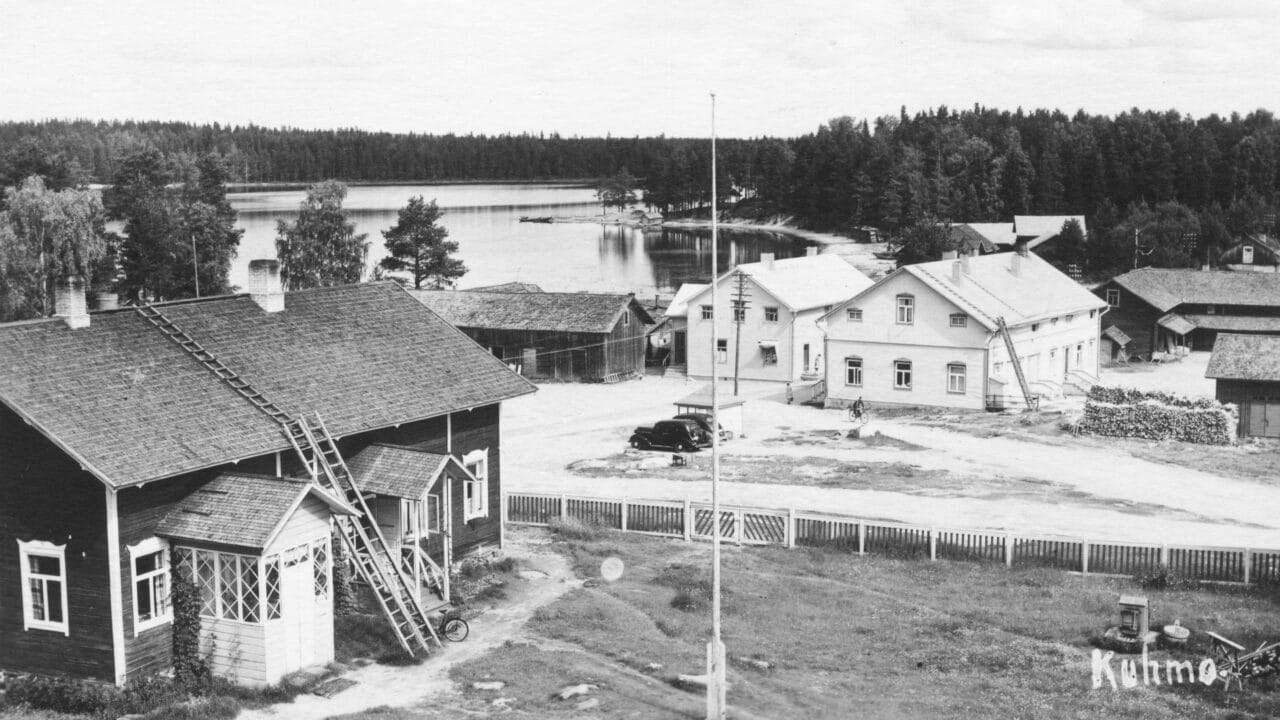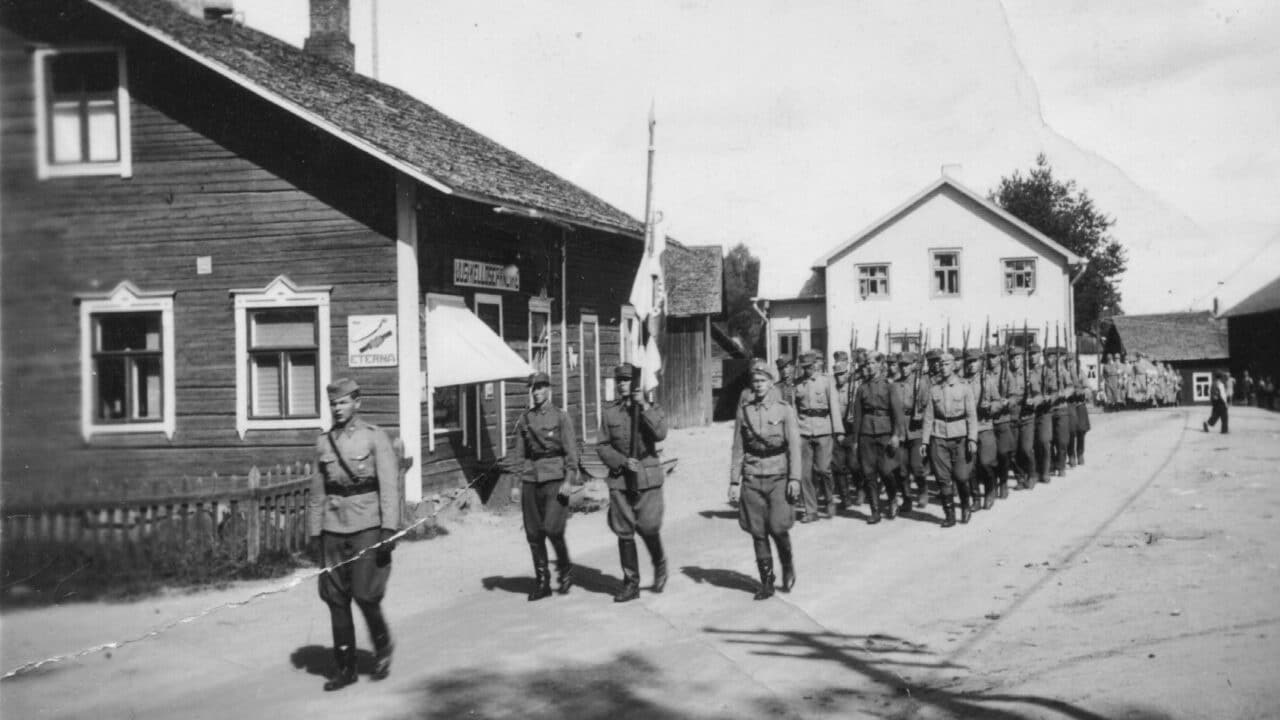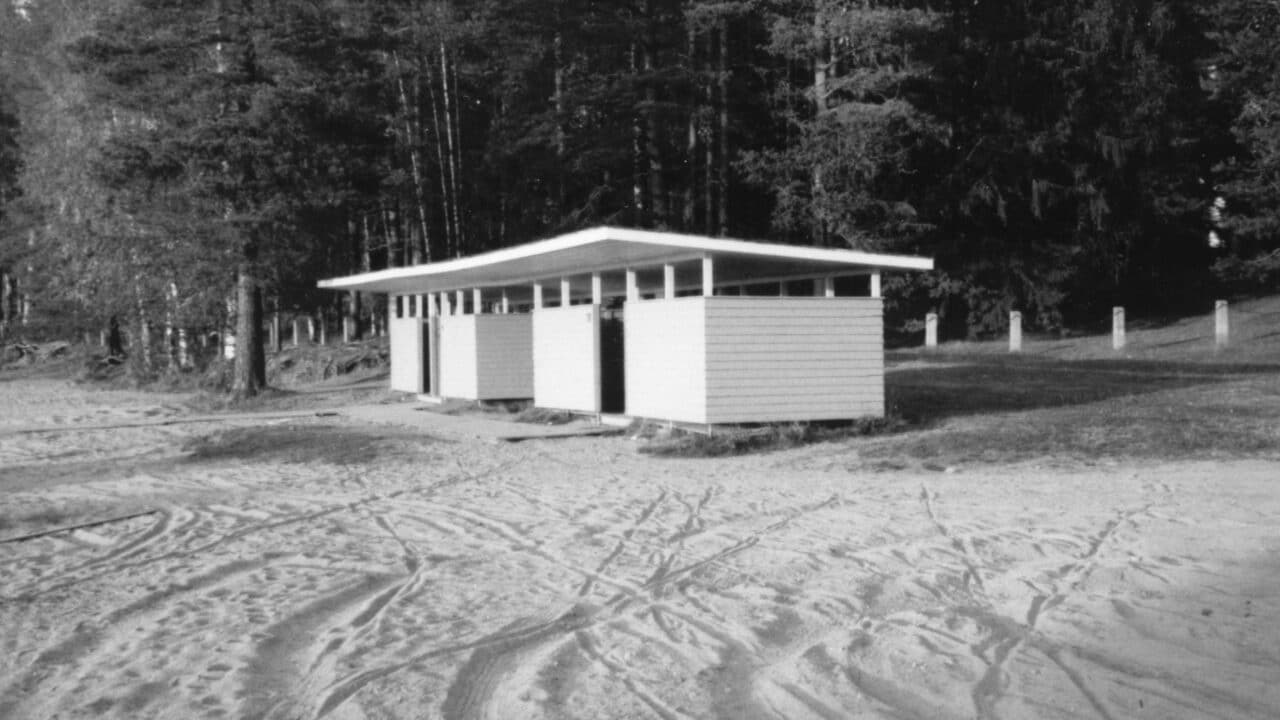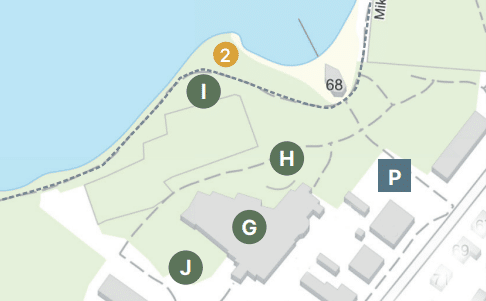
2. Ruukinranta
Ruukinranta got its name from a sawmill, operating in the nearby Hankaniemi, and an adjacent cement factory, launched in the late 1920s. The first frame saw in Kuhmo was powered by a steam engine, which was installed in 1919 and was also used for running a mill and a generator. Thanks to this generator, some houses in the village had electric lights. The sawmill fire in the summer of 1924 took the village back to the era of oil lamps.
The picture shows a view towards Ruukinranta in the 1930s. On the left is Käräjätalo (the Court House), destroyed during the Winter War; in the middle are Sirviölä and Ruokola buildings and old taxis. In the background are the warehouses for the log floating equipment of Kajaani Oy and Metsähallitus (the National Forest Agency).

The most prominent landmark of today’s Ruukinranta area is the Kuhmo Arts Centre (Kuhmo-talo), completed in 1993. Previously, the on site of the Kuhmo Arts Centre stood the houses of Uutela and Sirviölä on the so-called Moilanen’s lot. The road from Kajaani through Sotkamo to Kuhmo continued east of the Moilanen’s courtyard to Hankaranta and the Kontiolansalmi ferry boat.
The photograph shows a parade in front of the houses of Uutela and Sirviölä during the Interim Peace on 11th August 1940. In the foreground, a Civil Guard unit is marching with a flag guard, followed by a unit of women’s Lotta Svärd Organization.

For decades, Ruukinranta has been a popular beach with its first changing rooms built in the early 1960s. Old changing rooms were replaced in 1996 by an electrically heated beach pavilion, which is also used by winter swimmers during the winter.
On Kainuuntie Street, at the intersection towards the beach, there was a bridge, favoured by young lovers, known as “the Bridge of Sighs.” During the Winter War, the underside of the bridge was used as a bomb shelter.

G. Kuhmo Arts Centre (Matti Heikkinen 1993)
H. The Woman and the Gate (Jaana Bombin 1995)
I. Maltti and Viltti (Esko Määttä 2007)
J. Memorial for the Veterans (Juhani Vepsäläinen 1994)